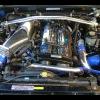Placement Of Afm
Announcements
-
Similar Content
-
Latest Posts
-
Thanks, I'll give that a go. Hard pass on the steel bushings though 😄
-
By Dose Pipe Sutututu · Posted
LOL.... a good amount of people (not all) on that continent seem to know everything and like to measure things in bananas, football fields, statue of liberties instead of the metric system lol. -
By dawhitehonky · Posted
I assume the modules are similar enough, so if you've had no issues I don't see why I would. I have tried to find a wiring diagram for the FPCM / fuel pump circuit, but I can't find it anywhere. Otherwise, I would just do some wire cutting and joining at the FPCM and give the 12 V supplied to the FPCM directly to the pump instead. If you know anyone that could help with wiring diagrams, I'd be very happy -
If it dies, then bypass. The task isn't difficult. I have one running on a standard R32 FPCM. That's after nearly 20 years of it running an 040, which pull substantially more current than the Walbro. They're not the same module, but I'd hope it indicates that the R33 one should be man enough for the job. I think people kill them when putting proper sized pumps on them, not these little toy pumps we're talking about here.
-
Silicone spray won't hurt anything. And if it does, that's an opportunity to put some solid steel spherical bushings in, so you can really learn what suspension noise sounds like, If you're going to try it, just spray one bush at a time, so you can work out which one is actually noisy. My best guess is that if the noise started only since putting the coilovers in, then it is just noise being transmitted up through the top mounts of the struts, and not necessarily "new" noise from bushes. But it's almost impossible to know.
-





.thumb.jpg.1b7f9b555236b5ea56c3fed20c733de8.jpg)
Recommended Posts
Create an account or sign in to comment
You need to be a member in order to leave a comment
Create an account
Sign up for a new account in our community. It's easy!
Register a new accountSign in
Already have an account? Sign in here.
Sign In Now